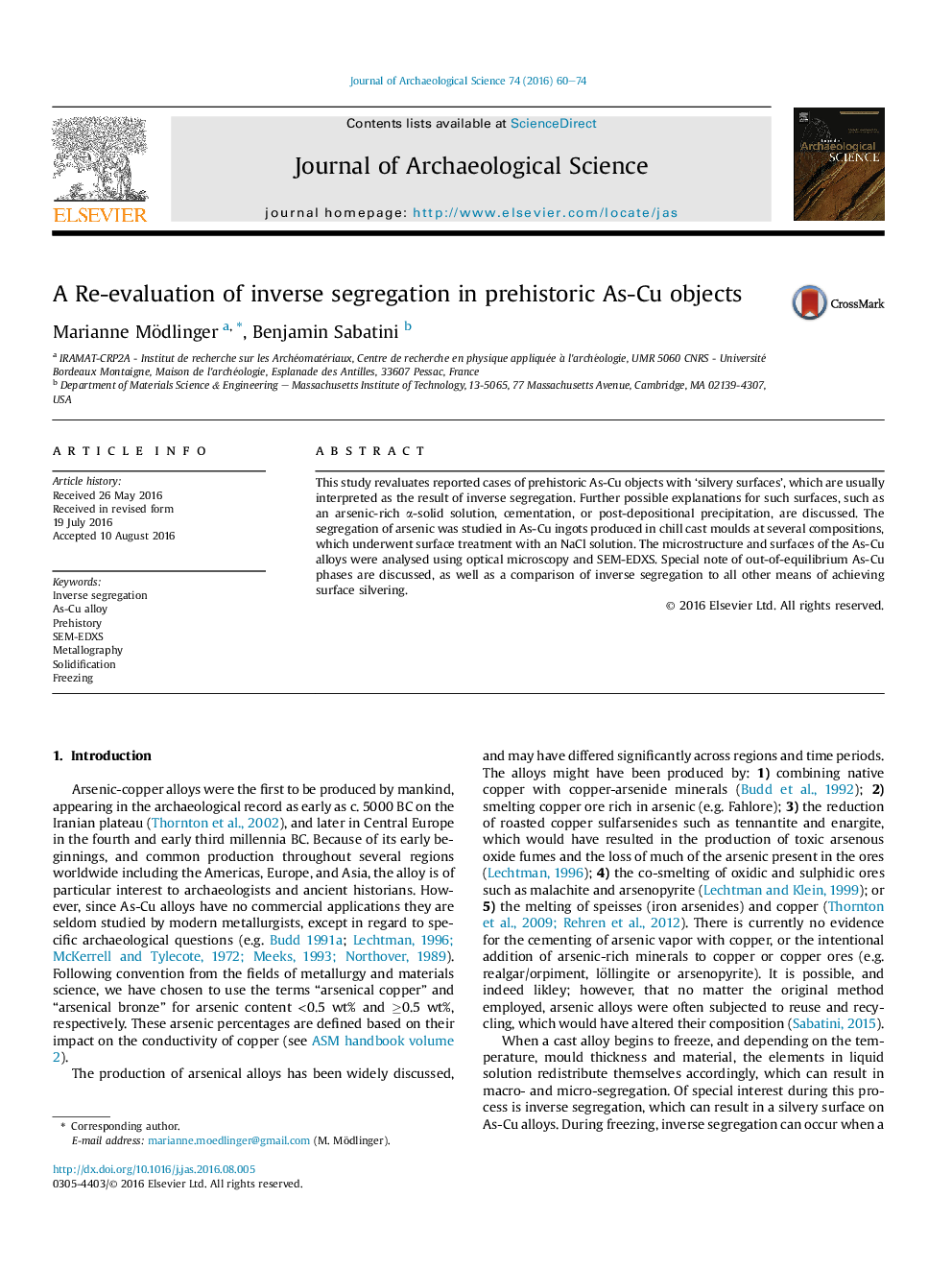| Article ID | Journal | Published Year | Pages | File Type |
|---|---|---|---|---|
| 7441150 | Journal of Archaeological Science | 2016 | 15 Pages |
Abstract
This study revaluates reported cases of prehistoric As-Cu objects with 'silvery surfaces', which are usually interpreted as the result of inverse segregation. Further possible explanations for such surfaces, such as an arsenic-rich α-solid solution, cementation, or post-depositional precipitation, are discussed. The segregation of arsenic was studied in As-Cu ingots produced in chill cast moulds at several compositions, which underwent surface treatment with an NaCl solution. The microstructure and surfaces of the As-Cu alloys were analysed using optical microscopy and SEM-EDXS. Special note of out-of-equilibrium As-Cu phases are discussed, as well as a comparison of inverse segregation to all other means of achieving surface silvering.
Related Topics
Physical Sciences and Engineering
Materials Science
Materials Science (General)
Authors
Marianne Mödlinger, Benjamin Sabatini,
